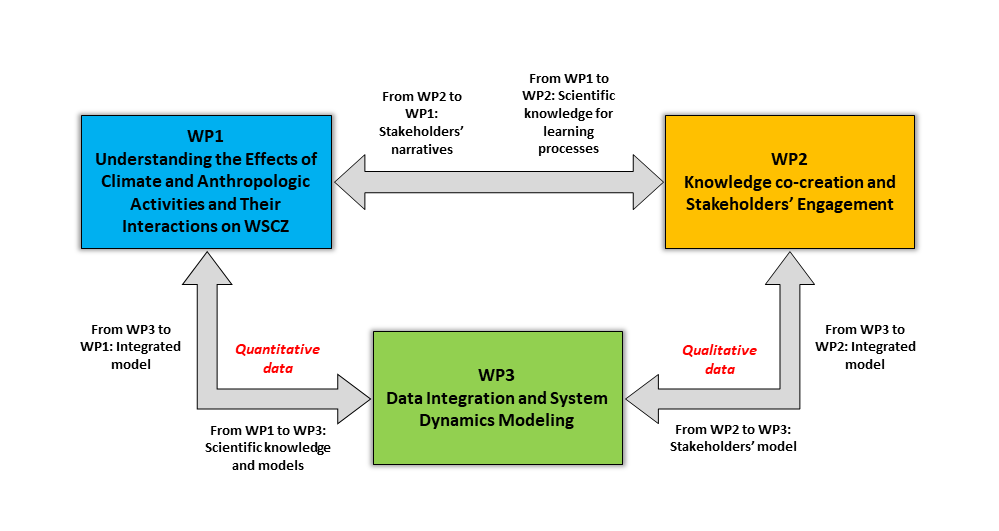INTERACTION uses science-based methodologies and tools for better understanding and modeling the dynamics of the WSCZ in the three case studies. The approach implemented is based on System Dynamics Modeling (SDM) where quantitative and qualitative outputs are combined to provide “sustainable adaptation pathways”.
SDM represents a powerful approach for understanding systems that involve complex interactions between social, economic, and hydrological processes. This modeling task is being tackled within work package WP3 (“Data Integration and system dynamics modeling”). The modeling process, considering socio-economic and environmental sub-systems, can be effectively conceptualized and analyzed quantitatively using Causal-Loop-Diagram (CLD) and Stock-Flow-Diagram (SFD) simulation.
The objective of WP3 is to integrate the data provided in WP1 and WP2 and build the models in which the scientific knowledge is materialized to serve the elaboration of new management tools for sustainable development and use of soil and groundwater systems. The quantitative data (physical, hydrogeological, climatic, and socioeconomic) are the outcomes of WP1 which aims to understand the effects of climate and anthropogenic activities and their interactions on WSCZs. The qualitative data (stakeholders’ knowledge) are the outcomes of WP2 which aims to understand knowledge co-creation and stakeholders’ engagement.

Integration of data from WP1, WP2, and WP3 for sustainable groundwater management.